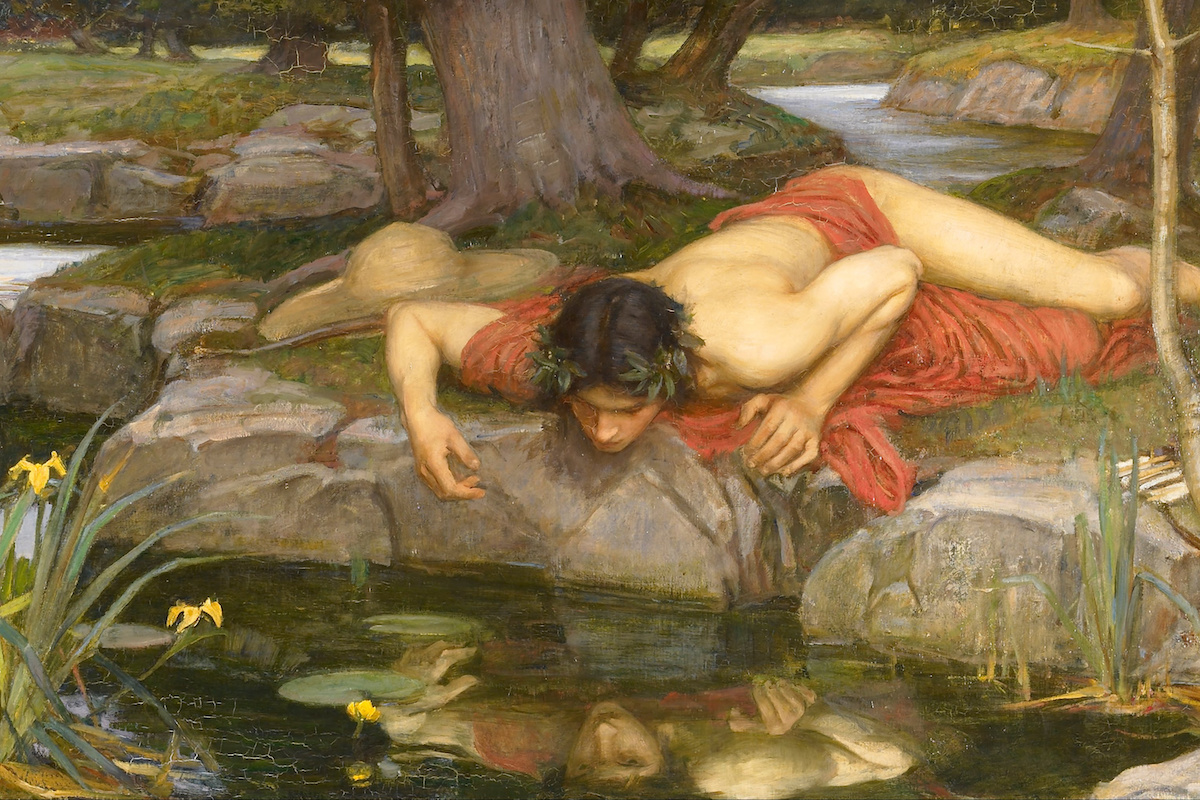Weekly update 6
 |
| Sir William George Gillies, "Moorfoot" (1961) |
When Anselm first introduced the
divine utterance of creation, he left it open whether God would utter creation
by means of a single word or many words: “whatever he made, he made it through
his innermost utterance (whether by saying individual things by means of
individual words, or instead by saying all things at once by means of one word).”
Now that he has identified that utterance with the Word who is with God, and is
God, Anselm can resolve that issue: the Word is God, and God is supremely
simple, so the Word is supremely simple. The Word by which God utters creation
is one Word.
How,
then, do we account for the variety and differentiation among created things? Augustine,
drawing on the same craftsman analogy that Anselm uses, had argued that of
course God must have different conceptions (rationes) for different creatures;
it would be absurd to think that God makes a human being and a horse by the same
conception. There is a divine idea of a horse, a divine idea of a human being,
and so on for each kind of creature; these ideas are in the Word. The apparatus
of divine ideas served both a metaphysical and an epistemological function.
Metaphysically, it offered an account of universals—that is, of what all things
of the same kind have in common—that satisfied both the Platonic intuition that
universals are real and the Christian requirement that nothing, not even
universals, exist independently of God. Epistemologically, it explained how
there can be general or universal knowledge: knowledge, not of this horse and
that horse, but of what it is to be a horse.
Anselm’s insistence on the unity of
the Word deprives him of these resources. There is no question that Anselm
thinks universals are real, and that we have universal and not merely particular
knowledge, but he does not construct a systematic account of universals or even
give us the materials with which we might construct such an account on his
behalf. Where Augustine would say that the Word contains the blueprint
for all creatures, Anselm says that the Word is the blueprint for all
creatures. Yet creatures—limited, changing, and fragmented as they are—are wildly
unlike the infinite, immutable, and simple Word. How, then, do we make sense of
the claim that the Word is the blueprint of creation? Anselm sees the
difficulty clearly: “If the Word has no likeness to mutable things, how is it
that they were patterned after him?”
Anselm asks us to consider the relation
between a human being and a painting of a human being. The reality of humanity is
in an actual human being; in the painting there is a likeness or image of that
reality. Similarly, the reality of existence is in the Word; in creatures there
is a likeness or image of that reality. You could even say, in one sense, that
the Word alone exists (just as you can say that nothing is human except a
living human being) because the Word alone, as divine, possesses perfect and
unlimited existence. In another sense, however, creatures exist as well,
because they have been made by the Word and in accordance with the Word. As the
painting is an imitation of the living original, creatures are an imitation of
the Word. The greater their resemblance to the Word, the greater their being:
living creatures are greater than non-living, creatures capable of perception
are greater still, and rational creatures are the greatest of all, because they
imitate the Word as closely as any creature can. But the Word in no way depends
on creatures to exist, or even to be a Word, any more than a human being
depends on his portrait to exist or to be a human being. The Word is the Word
of God, not (as it turns out) the Word of creation, because the Word is a
perfect likeness of God and not at all a likeness of creation, though creation
is a likeness of the Word.
This is, to be sure, a difficult
position to make sense of. Part of the difficulty is that we think of the
relation of being like as what we nowadays call a symmetric relation. In
a symmetric relation, if x bears that relation to y, y
also bears it to x. Being like seems like a strong candidate for
being a symmetric relation: if I am like my sister, my sister is like me. So if
creatures are like the Word, surely the Word is like creatures. But for Anselm
the relevant relation is not being like, but being a likeness of,
which is quite plausibly taken as an asymmetric relation. We might say that if
my portrait is like me, I am like my portrait; but we would certainly not say
that if my portrait is a likeness of me, I am a likeness of my portrait. It is
in precisely this sense that creatures are a likeness of the Word but the Word
is not a likeness of creatures.
This explanation gets us some way
toward understanding Anselm’s view of the relationship between creation and the
Word, but the notion of likeness (or resemblance or imitation—he uses all these
expressions) leaves some mysteries unresolved. One such mystery is how
different creatures imitate the Word in different ways. Anselm offers us a way
of understanding how a human being imitates the Word both in a different way
and in a more excellent way than a cat does: the human being has reason,
whereas the cat has only the power of sensation. But how does a dog imitate the
Word in a different way from a cat? It’s hard to see an answer, and yet
presumably creatures can be different from one another only insofar as they imitate
the Word in different ways.









Comments
Post a Comment